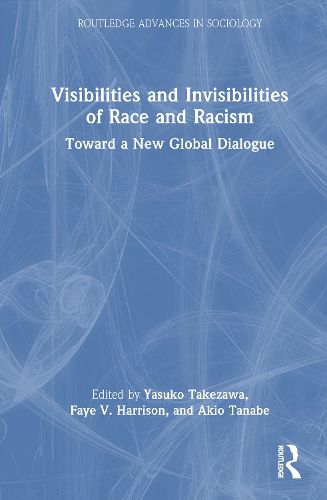Readings Newsletter
Become a Readings Member to make your shopping experience even easier.
Sign in or sign up for free!
You’re not far away from qualifying for FREE standard shipping within Australia
You’ve qualified for FREE standard shipping within Australia
The cart is loading…






Takezawa, Harrison, Tanabe, and their contributors present a multi-sited, transnational, and intercultural perspective on racism, shifting its emphasis away from the conventional North Atlantic interpretive frameworks to better understand its fundamental nature.
Racism is not a uniquely transatlantic phenomenon but, because it is most often understood within Euro-American paradigms, its salience in other contexts is often less visible. The chapters in this volume analyze the process by which fundamentally invisible differences have been made visible, and various groups and communities have been marked, essentialized, and substantialized under a range of social, political, and cultural conditions. Focusing on the space between the visible and invisible, they evaluate the dynamics by which invisible differences are rendered visible, and by which visible differences render other differences invisible. In doing so, they promote a decentering of Western-centered frameworks and elucidate continuities with and discontinuities from past era of racial antagonism and conflict. They look at case studies ranging from Japan, India, and Southeast Asia, to Iceland, the United States, and intra-"white" racism in Europe. The strength of this work lies in its exploration of the varied modalities of race and racism, particularly those that deviate from the conventional, visibly identifiable notions of race, thus broadening the understanding of racism beyond traditional paradigms.
An important contribution to the re-worlding of the study of racism for scholars, researchers, and students of anthropology, sociology, ethnic studies, and intercultural studies.
$9.00 standard shipping within Australia
FREE standard shipping within Australia for orders over $100.00
Express & International shipping calculated at checkout
Takezawa, Harrison, Tanabe, and their contributors present a multi-sited, transnational, and intercultural perspective on racism, shifting its emphasis away from the conventional North Atlantic interpretive frameworks to better understand its fundamental nature.
Racism is not a uniquely transatlantic phenomenon but, because it is most often understood within Euro-American paradigms, its salience in other contexts is often less visible. The chapters in this volume analyze the process by which fundamentally invisible differences have been made visible, and various groups and communities have been marked, essentialized, and substantialized under a range of social, political, and cultural conditions. Focusing on the space between the visible and invisible, they evaluate the dynamics by which invisible differences are rendered visible, and by which visible differences render other differences invisible. In doing so, they promote a decentering of Western-centered frameworks and elucidate continuities with and discontinuities from past era of racial antagonism and conflict. They look at case studies ranging from Japan, India, and Southeast Asia, to Iceland, the United States, and intra-"white" racism in Europe. The strength of this work lies in its exploration of the varied modalities of race and racism, particularly those that deviate from the conventional, visibly identifiable notions of race, thus broadening the understanding of racism beyond traditional paradigms.
An important contribution to the re-worlding of the study of racism for scholars, researchers, and students of anthropology, sociology, ethnic studies, and intercultural studies.